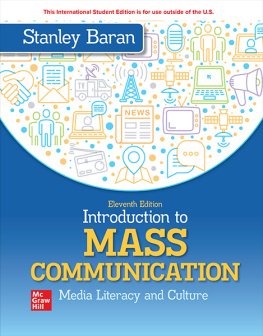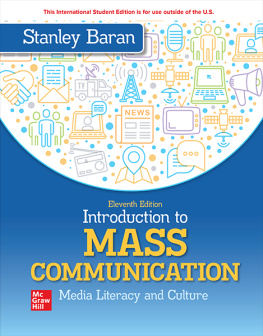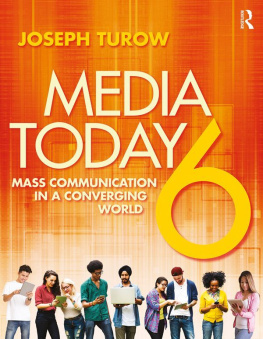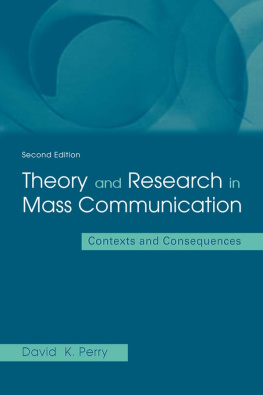
Page i
Eleventh Edition
Introduction to
Mass Communication
MEDIA LITERACY AND CULTURE
Stanley J. Baran
Bryant University

Page ii

INTRODUCTION TO MASS COMMUNICATION
Published by McGraw-Hill Education, 2 Penn Plaza, New York, NY 10121. Copyright 2021 by McGraw-Hill Education. All rights reserved. Printed in the United States of America. No part of this publication may be reproduced or distributed in any form or by any means, or stored in a database or retrieval system, without the prior written consent of McGraw-Hill Education, including, but not limited to, in any network or other electronic storage or transmission, or broadcast for distance learning.
Some ancillaries, including electronic and print components, may not be available to customers outside the United States.
This book is printed on acid-free paper.
1 2 3 4 5 6 7 8 9 LWI 24 23 22 21 20
ISBN 978-1-260-57086-1
MHID 1-260-57086-X
Cover Image: Alexey Blogoodf/Shutterstock
All credits appearing on page or at the end of the book are considered to be an extension of the copyright page.
The Internet addresses listed in the text were accurate at the time of publication. The inclusion of a website does not indicate an endorsement by the authors or McGraw-Hill Education, and McGraw-Hill Education does not guarantee the accuracy of the information presented at these sites.
mheducation.com/highered
Page iii
In loving memory of my mother,
Margaret Baran
she gave me life;
and in honor of my wife,
Susan Baran
she gave that life meaning. Page iv
Page v
From the Author

Courtesy of Stanley Baran
Dear Friends,
The media, like sports and politics, are what we talk about, argue over, dissect, and analyze. Those of us who teach media know that these conversations are essential to the functioning of a democratic society. We also know that what moves these conversations from simple chatting and griping to effective public discourse is media education. And regardless of what we might call the courseIntroduction to Mass Communication, Introduction to Mass Media, Media and Society, or Media and Culturemedia education has been part of the university for more than six decades. From the outset, the course has fulfilled these goals:
Increasing students knowledge and understanding of the mass communication process and the mass media industries
Increasing students awareness of how they interact with those industries and their content to create meaning
Helping students become more skilled and knowledgeable consumers of media content and therefore more ethical and confident participants in their worlds
We now call the fulfillment of these goals media literacy.
A Cultural Perspective
This texts cultural orientation toward mass communication places a great deal of responsibility on media consumers. In the past, people were considered either victims of media influence or impervious to it. The cultural orientation asserts that audience members are as much a part of the mass communication process as are the media technologies and industries. As important agents in the creation and maintenance of their own culture, audience members have a moral obligation not only to participate in the process of mass communication but also to participate critically as better consumers of mass media.
Enriching Students Literacy
The focus of this book, from the start, has been on media literacy and culture, and those emphases have shaped its content and its various learning aids and pedagogical features. Every chapters Cultural Forum box poses a critical thinking dilemma based on a current social problem and asks students to work through their solution. The Using Media to Make a Difference feature offers chapter-specific examples of how people in and outside the media industries have employed technology to meet important cultural and social needs. And each chapter ends with a Media Literacy Challenge that asks students to apply what theyve learned to a contemporary media issue. Literacy, in this case media literacy, is about living in, interacting with, and making the most of the world that surrounds us. That belief is the central philosophy of this text.
Page vi
My Thanks to You
Thank you for teaching mass communication. There are few college courses that will mean more to our students lives now and after they graduate than this one. Thank you, too, for considering Introduction to Mass Communication: Media Literacy and Culture for use in your course. I have poured the last 30 years of my career into this text and what it has to say about mass communication and the world that our interaction with the media produces. Your interest in this text confirms my passion.
Stanley J. Baran
Page vii
Brief Contents
PART 1 LAYING THE GROUNDWORK 2
PART 2 MEDIA, MEDIA INDUSTRIES, AND MEDIA AUDIENCES 50
PART 3 STRATEGIC COMMUNICATION INDUSTRIES 262
PART 4 MASS-MEDIATED CULTURE IN THE INFORMATION AGE 314
Page viii
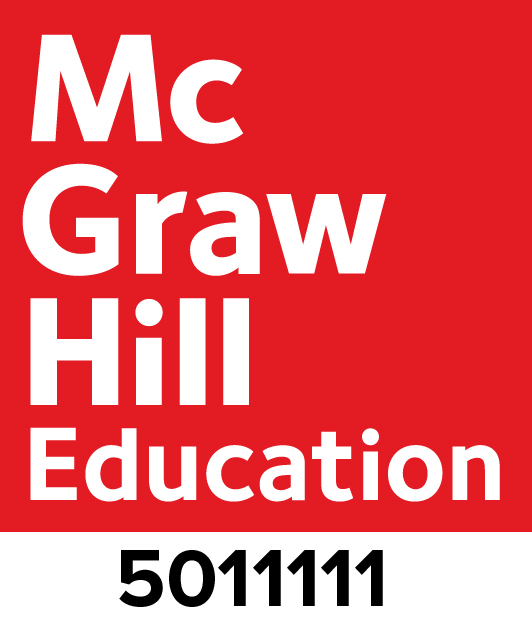
Page ix
Contents
PART 1 LAYING THE GROUNDWORK 2
Page x
PART 2 MEDIA, MEDIA INDUSTRIES, AND MEDIA AUDIENCES 50
Page xi
Page xii
Page xiii
PART 3 STRATEGIC COMMUNICATION INDUSTRIES 262
Page xiv
PART 4 MASS-MEDIATED CULTURE IN THE INFORMATION AGE 314
Page xv
Preface
McGraw-Hill Connect: An Overview
McGraw-Hill Connect offers full-semester access to comprehensive, reliable content and learning resources for the Communication course. Connects deep integration with most learning management systems (LMSs), including Blackboard and Desire2Learn (D2L), offers single sign-on and deep gradebook synchronization. Data from Assignment Results reports synchronize directly with many LMSs, allowing scores to flow automatically from Connect into school-specific gradebooks, if required.
The following tools and services are available as part of Connect for the Communication course:
Page xv
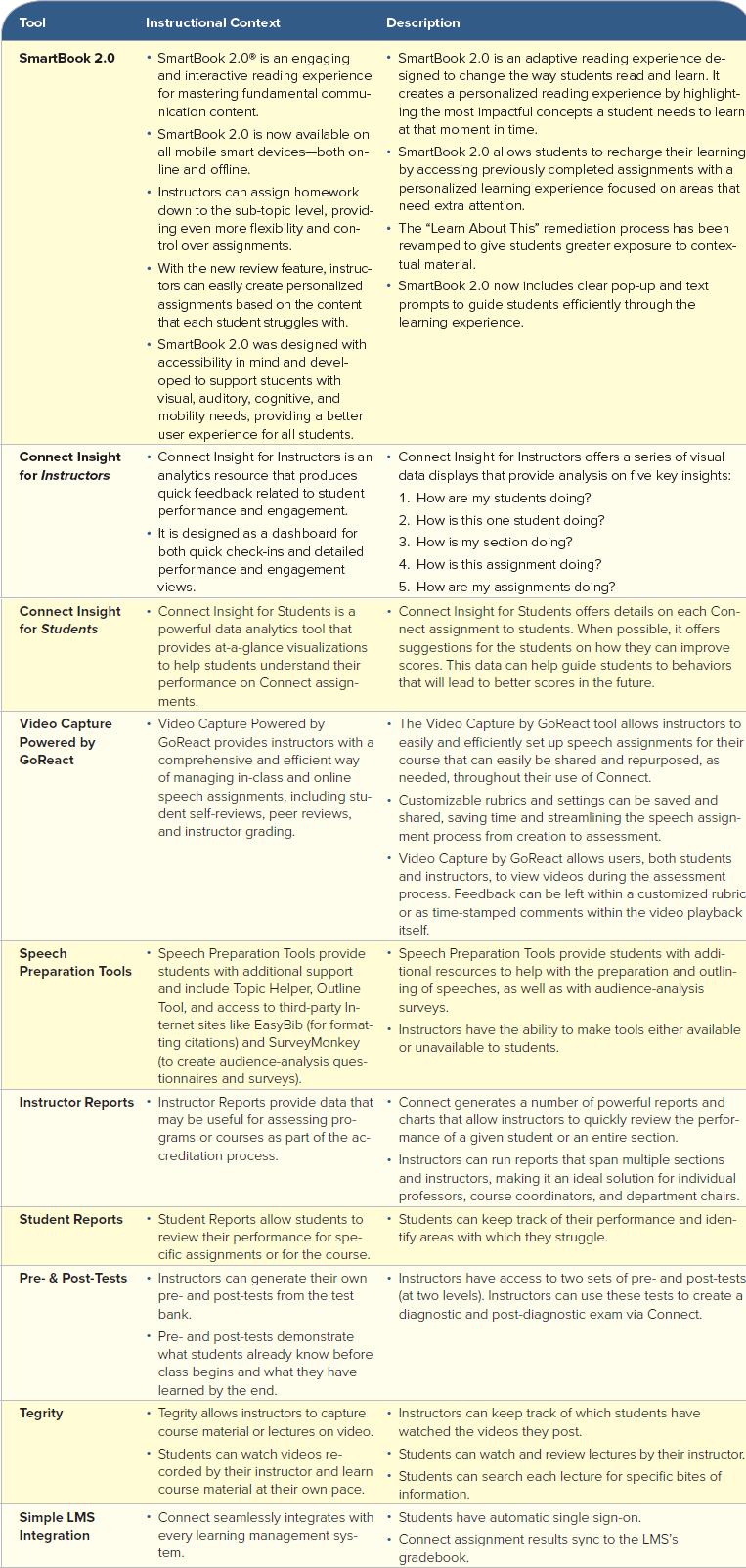
Page xvii
Instructors Guide to Connect for Introduction to Mass Communication: Media Literacy and Culture
When you assign Connect you can be confidentand have data to demonstratethat your students, however diverse, are acquiring the skills, principles, and critical processes that constitute effective communication. This leaves you to focus on your highest course expectations.
TAILORED TO YOU. Connect
Next page
